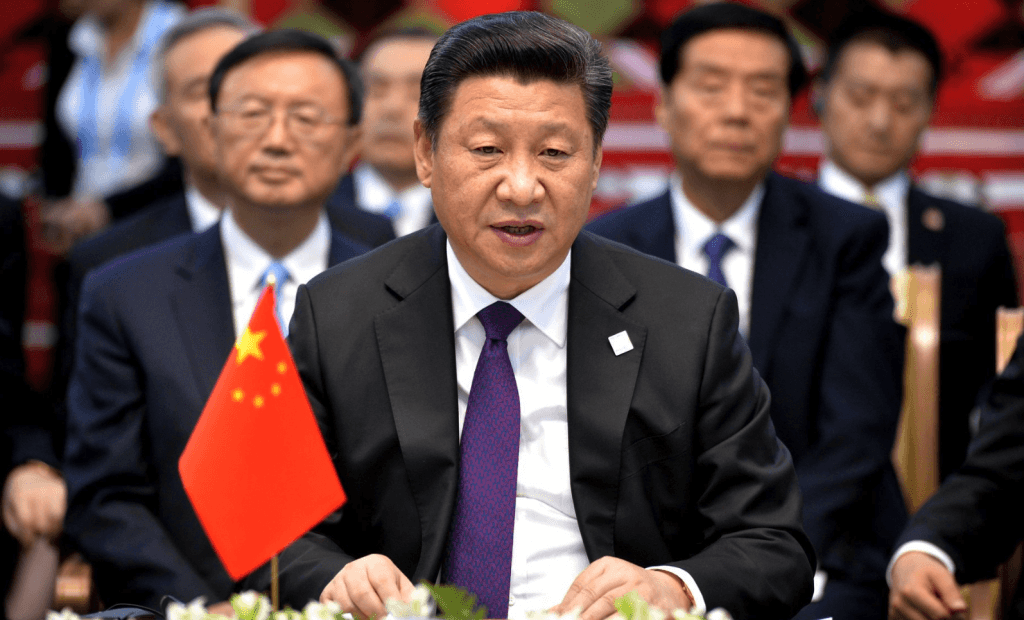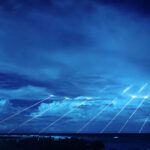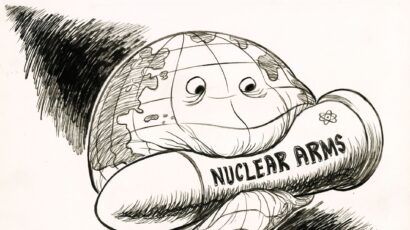China’s silence on nuclear arms buildup fuels speculation on motives
By Tong Zhao | November 12, 2021
 Chinese President Xi Jinping. Credit: www.kremlin.ru. via Wikimedia Commons. CC BY 4.0. Cropped.
Chinese President Xi Jinping. Credit: www.kremlin.ru. via Wikimedia Commons. CC BY 4.0. Cropped.
The US Defense Department released a report this month that spotlights the Chinese military’s rapid nuclear modernization efforts. The report follows news earlier this year that China constructed potential intercontinental ballistic missile silos and tested an orbital hypersonic missile system. China has also been at work strengthening its nuclear triad capability of land, sea, and air missiles. And the country is reportedly experimenting with new and perhaps exotic delivery technologies, while possibly shifting toward a launch on warning posture. World citizens who want to understand the security implications and prospects for future arms control cooperation with China must first try to understand the military rationale behind its nuclear expansion.
Chinese decision makers have never elaborated in public about speeding up China’s traditionally modest nuclear modernization program. But their occasionally reported public statements reveal how their thinking has evolved. The current Chinese paramount leader—Xi Jinping—upgraded the Rocket Force of the People’s Liberation Army from a military branch to a full military service in 2015. Then, in 2016, he instructed Rocket Force officials to “accelerate the pace of development and make a solid effort to bring strategic capabilities to a high level.”
“Our sea-based nuclear capabilities need to massively develop,” Xi told naval leaders during a 2018 submarine base inspection. Later, during an important March 2021 political conference, he instructed the military “to accelerate the construction of high-level strategic deterrent” systems as part of China’s 14th Five-Year Plan. When the draft of this plan was proposed in 2020, the original wording was “to construct high-level strategic deterrent” systems. The additional emphasis on “accelerate” reveals his urgency to expedite the nuclear modernization process.
What military rationale may have contributed to this development?
On a basic level, China may simply want to further assure its second-strike capability. The country has long relied on an uncertain second-strike capability as a deterrent, according to some Chinese nuclear experts. Beijing may be convinced that its growing strategic rivalry with Washington makes its uncertain second-strike capability insufficient to deter a more hostile United States. However, this does not fully explain the reported scale and speed of China’s nuclear expansion.
Even considering Chinese strategists’ long-standing distrust of the US military, China’s projected nuclear buildup looks excessive for securing a basic second-strike capability. Instead, China may be aiming to achieve some escalation management capabilities.
Since the 1980s, Chinese nuclear strategists have recognized that the threat of massive retaliation lacks credibility and could be considered too escalatory against a limited nuclear attack. Instead, they may have sought more sophisticated nuclear development and employment policies. At the same time, China may be concerned that the US reemphasis on low-yield nuclear weapons in recent years indicates a lower threshold for nuclear use. China could de-escalate a nuclear conflict on its own terms by responding symmetrically or proportionately to limited US nuclear employment. Accurate theater-range nuclear missiles, such as the DF-21 and DF-26, could hold US military bases, carrier groups, or Guam under threat.
Admittedly, such missiles would also give China the capacity to initiate a limited nuclear strike in a regional conventional conflict, such as one over the Taiwan Strait. Yet China’s growing conventional military advantages within the First Island Chain could help reduce its incentive to do so. Nevertheless, China may be concerned about US nuclear first use, given the shifting balance of conventional military power in the region. Indeed, many international analysts believe the Chinese paramount leader seeks to achieve national unification with Taiwan by 2049. As part of this effort, the People’s Liberation Army has been building up conventional forces to deter and defeat any conventional US military intervention of Chinese efforts to take over Taiwan. If China is capable of conducting proportionate nuclear retaliation at the theater level, it could deter Washington from escalating the conventional war to the nuclear level. Even if deterrence fails, China’s accurate theater-range nuclear weapons would increase Beijing’s chances of achieving de-escalation on terms favorable to China.
If a regional nuclear conflict further escalates and the United States launches a limited nuclear strike on select military targets in China, Beijing might want to respond with a limited nuclear strike on select military targets on the US homeland. For this, China would need long-range strike capabilities that are accurate, highly effective at penetrating US homeland missile defenses, and incapable of neutralization by US missile defenses. For a limited nuclear strike, China could not simply launch more missiles to saturate US missile defenses, as that would obscure the limited nature and intention of the strike. For this reason, China may be developing a more advanced nuclear force as a means to acquiring escalation management capabilities. In particular, the reported development of an intercontinental hypersonic glider system could be useful in this regard.
China may have had trouble determining how much nuclear modernization is sufficient for securing a second-strike capability. But it may have had even more trouble deciding how much additional nuclear modernization is sufficient for acquiring a proper escalation management capability. Proper escalation management capability is much more ambiguous than a basic second-strike capability based on massive retaliation. If China is indeed exploring nuclear escalation management options, the already-competitive US-China nuclear relationship would become much more acute. Once both countries seek advantageous capabilities over each other to be able to de-escalate nuclear conflicts on one’s own terms, an arms race could ensue.
The new Defense Department report asserts that China “probably seeks to keep at least a portion of its force on a [launch on warning] posture” and “has conducted exercises involving early warning of a nuclear strike and launch on warning responses” since 2017. To acquire a launch on warning capability would enhance the survivability of China’s second-strike forces, but it could provide additional military benefits. Specifically, China might worry that Washington could conduct a limited nuclear attack on China, while threatening a more massive nuclear attack should Beijing dare to retaliate with nuclear weapons. Given the US nuclear superiority, Chinese leaders might not be able to respond in kind. But this problem could be mitigated if Beijing publicly adopts launch on warning. Washington would then need to consider the possibility that Chinese leaders could order an immediate nuclear retaliation within minutes of detecting incoming US missiles and before any US threat of follow-on nuclear attack could be issued. In this regard, China’s growing interest in launch on warning capabilities might strengthen its de-escalation capacity by weakening the US capacity to de-escalate.
As a Chinese and world citizen, I am not alone in speculating about the Chinese government’s nuclear thinking. Senior Chinese diplomats in charge of relevant policy issues are not necessarily informed about the People’s Liberation Army’s nuclear capability development and policy deliberation. Most Chinese nuclear policy experts appear cut out of internal policy deliberations and instead rely on open-source research by foreign counterparts to understand their own country’s capabilities and motivations. The internal coherence and overall rationality of China’s new nuclear capabilities and posture is shrouded in secrecy and lacks domestic checks and balances. If Beijing elaborated on the military rationale behind China’s nuclear expansion, it would help mitigate international anxieties.
Together, we make the world safer.
The Bulletin elevates expert voices above the noise. But as an independent nonprofit organization, our operations depend on the support of readers like you. Help us continue to deliver quality journalism that holds leaders accountable. Your support of our work at any level is important. In return, we promise our coverage will be understandable, influential, vigilant, solution-oriented, and fair-minded. Together we can make a difference.
















To prop up their economy, China used to over build housing, so much so that the excess housing in China could house all of Germany, or all of Italy. They have taken a page from our overproduction playbook: make things that NEVER should be used, nuclear missiles. Instead of being seen as overproducing, just ramp up the patriotism and the waning of ‘the Other, which would have to be the US. Right now, we spend literally trillions on nukes, and loudly proclaim it. We form new ocean alliances with Australia. They have learned a lot from the US. Our military… Read more »
Nuclear weapons as part of foreign policy in any country demonstrates mankind at it’s most insane.
I find two big problems with this piece -VERY BIG and very damaging to appear in The Bulletin. First, the piece takes the Pentagon report at face value. There is no solid evidence that China is building up its nuclear capabilities to the point of abandoning a deterrent posture. It does not have a launch on warning policy; the US does. This should be made clear. Second, the piece treats quite casually the possibility of a “regional” war in East Asia, possibly a nuclear one. The people of East Asia should be on alert against this. Such a regional war… Read more »
Why don’t we state what most are thinking, China is worried about USA not handling the transfer of power peacefully.
This article fails to acknowledge the recent aggressive and provacative policies by the US toward China, including Obama’s “pivot to Asia”, the new military bases and missile emplacements in Guam and Okinawa, the blocking of the US of any discussion in the consensus bound UN Committee for Disarmament in Geneva of China’s proposal with Russia to discuss a draft treaty to ban weapons in space in 2008 and again in 2016, as well as US failure to support a cyberwar ban treaty which China views as necessary for “strategic stability”. China with 350 nuclear warheads decoupled from their missiles compared… Read more »
There are a number of problems with this article. First, the headline of the article, “China’s silence on nuclear arms buildup fuels speculation on motives,” is outright false, and a very blatant lie. China has absolutely NOT been silent on it’s nuclear arms policy. The Global Times is a Chinese government funded newspaper, and usually seen as reflecting the government’s position. Contrary to US and allied military and intelligence reports, China denies that it is increasing it’s nuclear warheads: https://www.globaltimes.cn/page/202111/1238102.shtml . Newsweek also reports that a Chinese official spokesperson has officially denied that China is engaged in a nuclear build up: https://www.newsweek.com/china-says-us-bringing-world-closer-nuclear-war-after-us-military-report-1645931 This confirms the views expressed in the… Read more »
“If Beijing elaborated on the military rationale behind China’s nuclear expansion, it would help mitigate international anxieties.” How about you mention the four hundred US military bases in the Pacific region with their nuclear missiles pointed at China. I’ve noticed the Bulletin is hosting neo-con think tank associated contributors who largely parrot the US state department CIA line on international issues